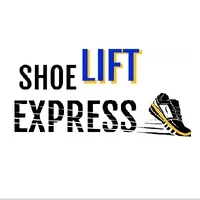When one leg is longer than the other about the same individual, this is referred to as a leg length discrepancy (LLD). Such disparities are relatively common, affecting up to 70% of the general population. Depending on the source, leg length differences can be classified as structural or functional. It is critical to distinguish between the two types of LLD because their treatments differ greatly. A leg length discrepancy (LLD) of 2 cm or less is rarely a functional issue. However, when this difference becomes uncomfortable or painful, surgeons frequently recommend a shoe lift as an alternative to surgery. Shoe lifts, the most common nonsurgical treatment for a leg length discrepancy, can help equalize leg lengths. In many cases, the lift can reduce the disparity to a manageable level. A lift can often improve a patient's ability to walk or run, as well as relieve back pain caused by a smaller leg length discrepancy.
What Causes Structural Leg Length Variations?
When one or both bones in the leg (the femur and/or the tibia) physically measure longer than the bone(s) on the opposite leg, structural leg length discrepancies occur, causing pain and discomfort. Leg disproportion can be congenital or the result of trauma, surgery, or degenerative disease. An Orthopedic Heel Lifts will be highly beneficial.
What Causes Functional Leg Length Variations?
When the bones are the same length but there is a muscular or skeletal difference, functional discrepancies occur. The appearance and symptoms of a true LLD are caused by an alignment issue. Among other functional issues, such a case could arise from the following:
Tight muscles surrounding the hip joint cause hip elevation on one side.Cervical scoliosisAsymmetry in foot movement (pronation)Structural Leg Length Disparity Treatment
For the short side, true structural discrepancies are typically addressed with full foot lifts. Smaller discrepancies can be treated with a heel lift or insoles for the shorter leg, but full-length lifts are far more effective for larger discrepancies. The Shoe Lifts For Uneven Legs are quite good.
How Do Lifts Get Added to a Shoe?
Depending on the amount required, the lift can be applied either within the shoe beneath the footbed or orthotic, or directly to the shoe's midsole.
Shoe Lifts or Orthotics Added to the Footbed
Lifts of up to 1cm can be placed within the shoe assuming the shoe has adequate depth and full-length volume. This type of lift is advantageous because it adds little weight to the shoe and is completely concealed within the shoe beneath an orthotic or insole.
Midsole shoe lifts have been added.
When shoe lifts exceed 1 cm, they are typically applied to the shoe's midsole. If this is the case, the shoe's midsole is split, the full-length lift is applied, and the outsole is reapplied to sandwich the lift into the shoe's midsole. You can search, “Custom Shoe Lifts For Kids” to get the list of the best shoelift manufactures near your location.
Business Name: Shoe Lift Express
Country: United States
Address: 2900 Central Ave Suite 110, Homewood, AL 35209
Email: victorcostacped@gmail.com
Contact No: +18089385438
0


